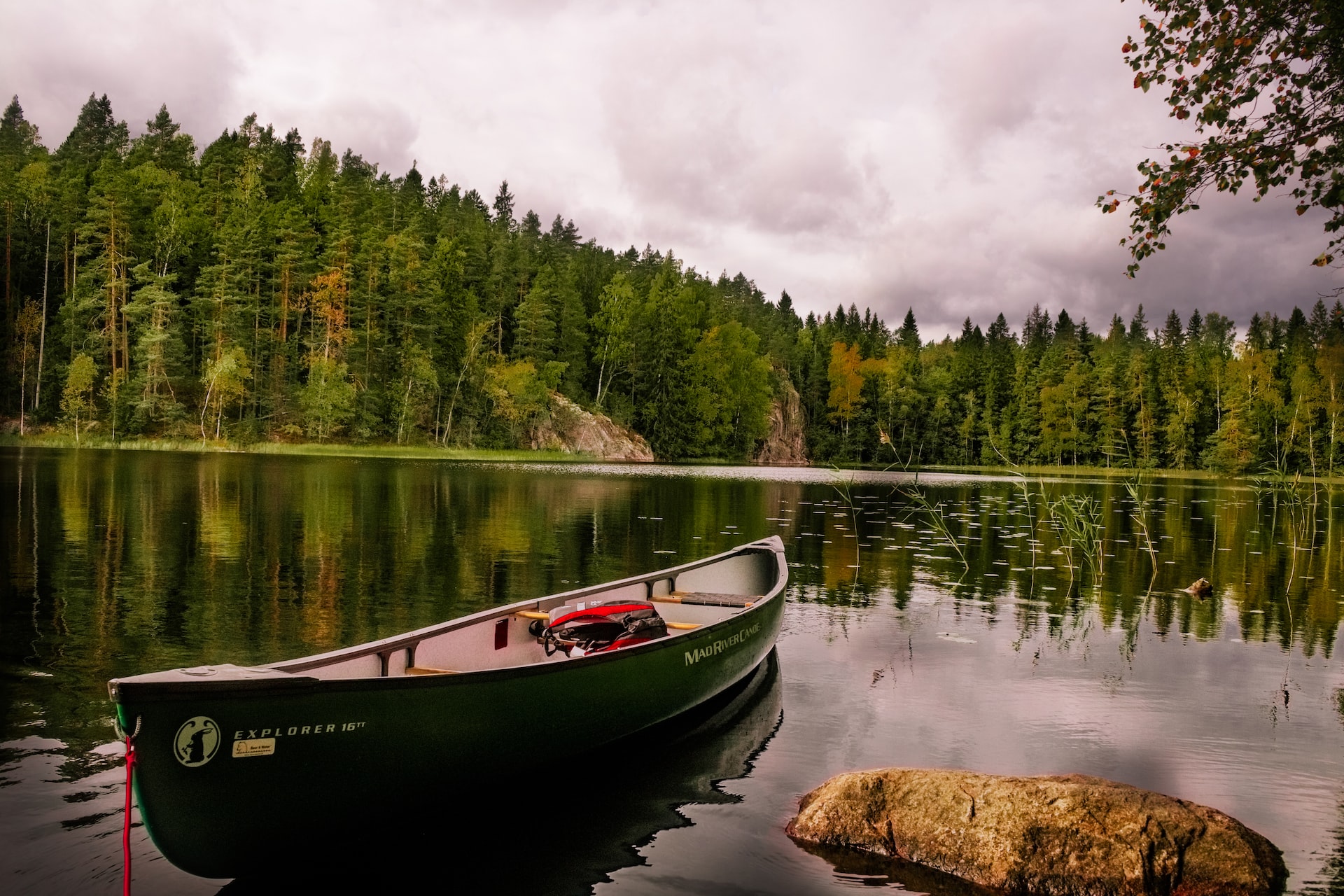Rowboat vs. Canoe: Which One Is Best for Fishing?
May 15, 2023

As an Amazon Associate, Modded gets commissions for purchases made through links in this post.
Fishing — one of humankind’s earliest pastimes. While it was once a primary food source, the ability to go grocery shopping has thankfully made fishing an activity of leisure rather than hunting. People are now free to enjoy time on the river without worrying about the need to come home with catches for the whole community. However, when you head out there’s still an essential choice to make — rowboat vs. canoe.
These two convenient vessels are a must for any solo or duo fishing trip. Their size makes them easy to transport or rent, with much lower costs than a massive motorized boat would have. Plus, since they’re nearly silent to move, there’s less of a chance you’ll scare the best fish away as you cruise through the water. While both boats have their merits, they may suit some needs better than others. Here’s the difference between the two and why you might choose one or the other.
The History and Typical Use of Rowboats
History’s earliest form of the rowboat came from Egypt somewhere around 7,000 years ago. Historians have found papyrus illustrating several gods transporting a man to the afterlife on a rowboat — or a barque — dating back to 1,000 B.C., along with the Khufu ship, which was either part of the Pharaoh’s fleet or for transporting him in death. Boat fanatics can make a special trip to Cairo to visit some of the first examples of water travel on Earth.
Ancient Egyptians used these boats for all kinds of transport. Though they later adapted to wooden sailboats, the rowboat once transported various items — food, building materials and even coffins. Naturally, these people needed a way to move goods up, down and across the Nile.
One very common rowboat nowadays is called the Whitehall. It came around as early as the 1500s, though many believe it gained its popularity sometime later. These sturdy vessels were used as workboats in England, then later came to the United States. Today, many of the boats are used for pleasure cruises, rowing contests, support during swimming competitions and exercise. They’re also often lighter for easier single-person launches and have a sliding seat for better rowing.
Unlike a canoe — a specific type of boat — several crafts could fit under the “rowboat.” You’ll likely be moving the vessel with one other person, so it’ll need to be relatively small. A good choice is a Class A boat, which comprises any vessel under 16 feet. People typically use boats like these for recreation — perhaps one of your buddies has a favorite craft he could recommend for fishing.
What Canoes Are All About
The canoe has a fascinating history. The Pesse canoe is the oldest watercraft ever found, likely over 10,000 years old. There’s actually no known inventor of the canoe since they are so old. It seems humans all over may have discovered the shape and run with it. Of course, the canoe does have associations with Native Americans and Canadians that are prudent to learn.
Like the ancient Egyptians, Native Americans used boats for many forms of transportation, especially in Canada. Migrating food meant they had to migrate as well, making the ability to traverse water essential. People accomplished this in one of two ways — crafting a dugout canoe or a framed one. As it sounds, a dugout canoe was made from a log people hollowed out to form a boat.
The second type took much more time. These ribbed canoes often utilized cedar, redwood and cypress trees to form the frame or the siding. The structure would then be encased in bark and strapped together with tree roots before the planks went on. These boats were most often used for hunting and transportation, but there is no known history to say people used them for pleasure cruises.
Of course, the canoe isn’t all ancient history. Plenty of Native people still use these for the same purposes their ancestors did, much like the rowboat. However, the canoe you’d pick up from the store won’t be a meticulously handcrafted vessel — it’ll likely be plastic. Modern commercial canoes aren’t exactly made with such care, but they’ll be there to cut through water easily in the same way.
Rowboat vs. Canoe — Which Is for You?
Canoes and rowboats both have great qualities — they have excellent stability, are portable and have the advantage of not being motorized. But if you’re more in the mindset of rowboat vs. canoe, here are a few things to consider.
There isn’t a specific kind of rowboat. While a canoe is actually a type of boat, a rowboat could be anything under 16 feet. You’ll need to narrow down your choices a bit more when looking for the perfect vessel for you. While canoe construction differed amongst Native tribes, if you ask for one at your local sporting goods store, the only questions you’ll likely need to answer are what material and size you want.
A standard rowboat will likely be wider than a canoe. While canoes were necessary to travel though rivers — giving them their narrow design — many rowboats could move through much wider spaces. If you intend to take a lot of stuff with you, you may want to go with something with a bit more surface area.
However, you can’t ignore the tactical advantage of the canoe. While the key difference between a rowboat vs. canoe is the shape and movement method — paddling vs. rowing — those variations give canoes a leg up. Its length will offer more room for you and a pal to fish in while also letting you cut through inland water with ease. There are even recent sea-worthy canoes that could give you the same advantage on open water.
That’s actually another significant differentiation — the intended use. Many rowboats will already be ready for the ocean, but you’ll have to find a specific canoe to hit those waves. Depending on where you’ll be setting out, you may need to be more picky.
Picking a Rowboat vs. Canoe
Both these ancient forms of water travel are excellent choices for your next fishing trip. When deciding between a rowboat vs. canoe, it all comes down to where you plan to make your catches. You might even learn a little history while you’re at it.






